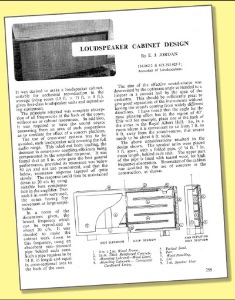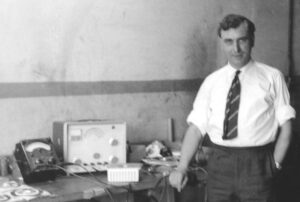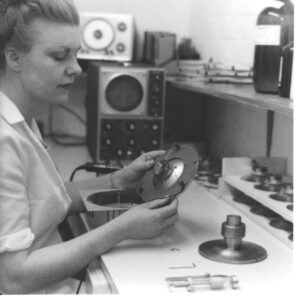February would have seen Ted Jordan’s 92nd birthday. When he passed away in 2016, the world lost a tireless innovator in the field of loudspeaker design. Indeed, he was still developing and discussing new ideas for us to carry forward right up until he left us.
2021 also marks the 70th anniversary of Ted’s professional involvement in loudspeakers, with the publication of his first article on the subject.
His article, Loudspeaker Cabinet Design, was written for the British Sound Recording Association and published in their magazine in 1951. It describes a quarter-wavelength, labyrinth loudspeaker enclosure, designed to reach 20 Hz and “suitable for orchestral reproduction in the average living room, given first-class loudspeaker units and reproducing equipment.” The enclosure uses a 4.3m non-resonant pipe behind a 20cm full-range loudspeaker. The pipe is lined with absorbent wool and the construction is a mix of wood and concrete. The labyrinth is vented, which was unusual at the time and predates Arthur Bailey’s famous transmission line design by 14 years!
Ted always said that the article resulted in his getting a job with Goodmans Industries the following year, where he rose to become Technical Director. Whilst there, he designed a number of well-respected loudspeakers, including the famous Axiette full-range driver.
The use of full-range loudspeakers was a deep interest which Ted maintained throughout his career. When he originally designed the Goodmans Maxim, for example, he intended it to be a single-driver design, not the two-way speaker it eventually became.
By the late 50s, it was becoming apparent that there were shortcomings with the standard approach to loudspeaker design. One company to address this was Acoustical Manufacturing, with the QUAD Electrostatic loudspeaker, launched in 1957. Around the same time, Ted was tasked with designing an ESL for Goodmans, but when they decided not to take it further, he turned his attention back to single-cone drive units which led to the Jordan-Watts Module. Launched in 1964, this highly innovative, alloy-cone driver addressed many of the drawbacks of contemporary transducers.
The Jordan-Watts Module sold well for two decades and units are still in use around the world. Ted went on to design a titanium cone variant for Audio & Design Ltd (pictured below under construction).
The continuous technical innovation which was characteristic of Ted’s career was not an end in itself. He always saw it as a way of getting closer to the music, achieving a reproduced sound that was as real as possible.
This approach avoids fashionable trends and over-complication, seeking a path that is natural and “just simple enough”. It’s a philosophy that continues to inspire and drive all of us in EJ Jordan Designs and that is embodied in Ted’s last design, the Eikona full-range driver, the result of seven decades of experience and innovation.




